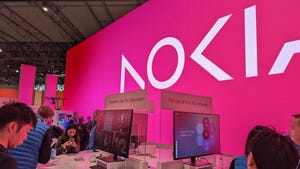How easy will it be for IBM to digest Red Hat?
Imagine our surprise the day before a lunch scheduled with the CTO of Red Hat when IBM announced it was buying his company.
October 30, 2018

Imagine our surprise the day before a lunch scheduled with the CTO of Red Hat when IBM announced it was buying his company.
Sometimes the journalism gods, those that are left, smile on even the humblest of hacks and today it was our turn. Lunch with Chris Wright (pictured below, with said hack) had already been arranged with the promise of delivering the kind of light Linux chit-chat over a glass of red that we all secretly crave. But then, out of the blue (pun intended) IBM announced it’s going to buy Red Hat for $34 billion and things suddenly got a bit more spicy.
Now, you don’t get to be the CTO of a major company by speaking injudiciously to the press, so we didn’t expect Wright to have much to say on the relative merits of the acquisition itself. Instead we wanted to know more about what Red Hat brings to the table, such that a venerable tech giant would want to drop such a serious chunk of change on it.
The core of Red Hat’s product strategy for the past few years has been the hybrid cloud. In its simplest terms this refers to the use of both private, on-premise server capacity and the public cloud as found in colossal data centers provided by the likes of AWS, Microsoft and Google. Increasingly this applies to pretty much all larger enterprises so it’s a pretty important place to be if you’re serious about the B2B tech space.
Sharing this writer’s love of a pun, Wright conceded that the cloud is a nebulous term, but that’s why you need companies that have made it their business to get their heads around it, such as Red Hat. IBM is, and always has been, a B2B tech company, so it’s easy to see why it would want to buy a company that specialises in one of the most important and arcane manifestations of that.
Everyone in tech has probably had to puzzle over one of those baffling software architecture slides that attempt to explain how everything fits together via the use of endless rectangles piled on top of each other like some geeky game of Jenga. Throw hundreds of those into a virtualised environment spanning any number of actual physical locations and you get somewhere close to the kind of challenge faced by today’s CTO.
Between the cloud and the cloud user lies an extended value chain of technologies and services dedicated to making that relationship as useful and intuitive as possible. One good example of this is the banking app, through which anyone can now whizz thousands of pounds around the world in an instant. For this to be made possible a hell of a lot of robust technologies have to exist between the bank’s servers and the client device.
According to Wright, Red Hat plays across that whole value chain, so for that reason alone it’s easy to see its appeal to IBM. But Red Hat is also deeply rooted in the Linux, open-source culture, which isn’t necessarily an obvious fit with IBM’s notoriously rigid corporate philosophy. As with so much M&A, how effectively the cultures of the two organisations are reconciled will be the single most important factor in determining whether this deal goes down smoothly or results in corporate indigestion.

About the Author(s)
You May Also Like











_1.jpg?width=300&auto=webp&quality=80&disable=upscale)


.png?width=800&auto=webp&quality=80&disable=upscale)